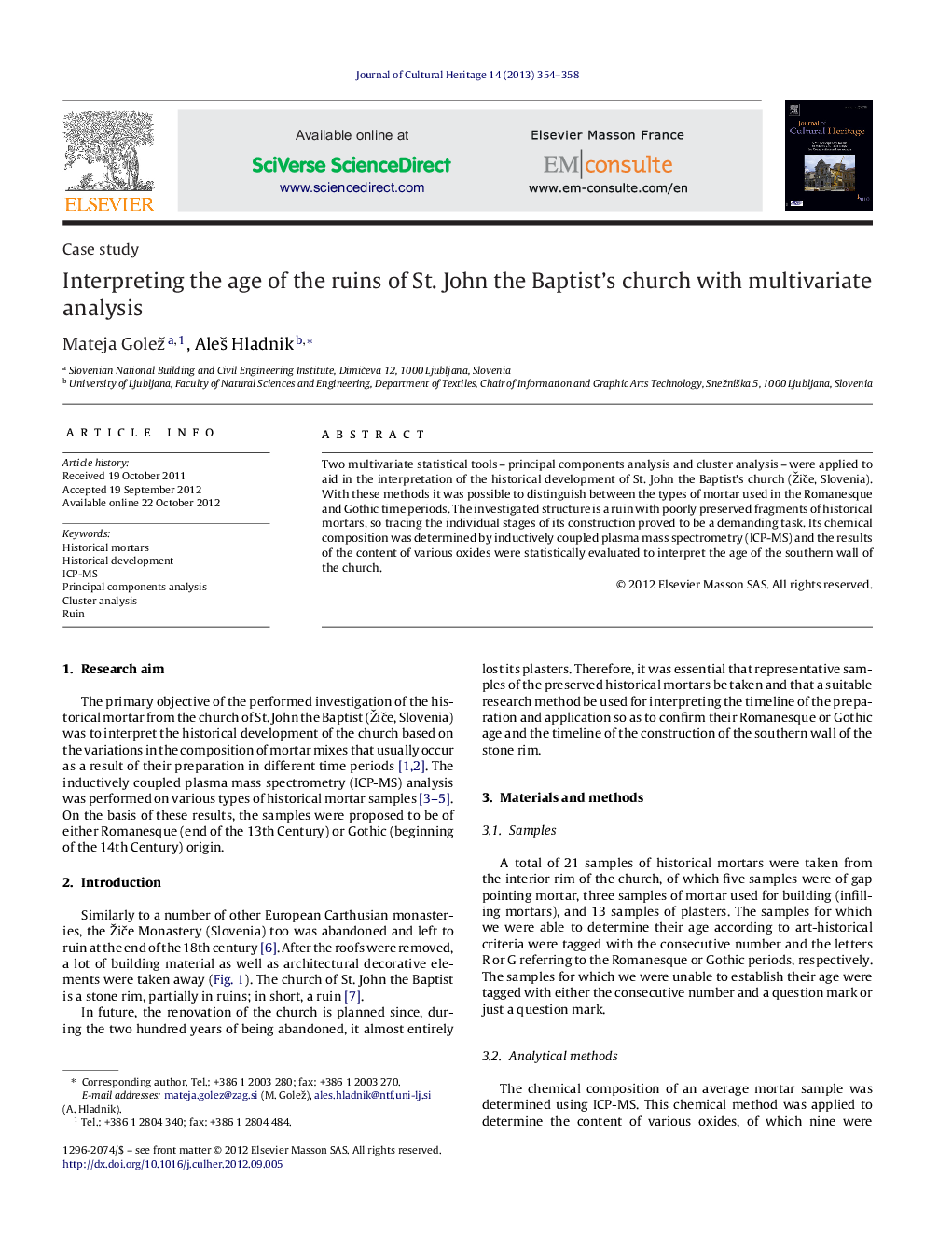| Article ID | Journal | Published Year | Pages | File Type |
|---|---|---|---|---|
| 1038194 | Journal of Cultural Heritage | 2013 | 5 Pages |
Abstract
Two multivariate statistical tools - principal components analysis and cluster analysis - were applied to aid in the interpretation of the historical development of St. John the Baptist's church (ŽiÄe, Slovenia). With these methods it was possible to distinguish between the types of mortar used in the Romanesque and Gothic time periods. The investigated structure is a ruin with poorly preserved fragments of historical mortars, so tracing the individual stages of its construction proved to be a demanding task. Its chemical composition was determined by inductively coupled plasma mass spectrometry (ICP-MS) and the results of the content of various oxides were statistically evaluated to interpret the age of the southern wall of the church.
Keywords
Related Topics
Physical Sciences and Engineering
Chemistry
Physical and Theoretical Chemistry
Authors
Mateja Golež, Aleš Hladnik,
